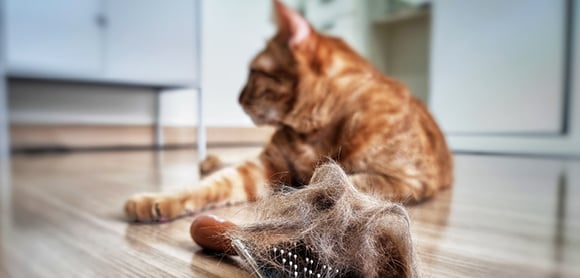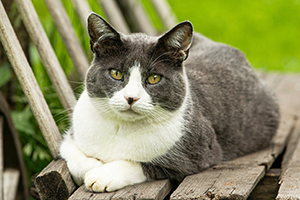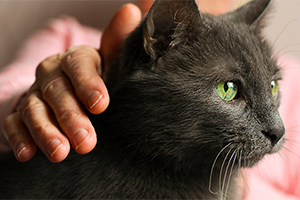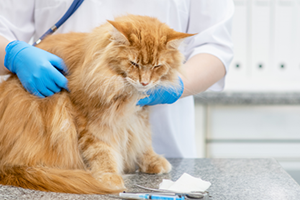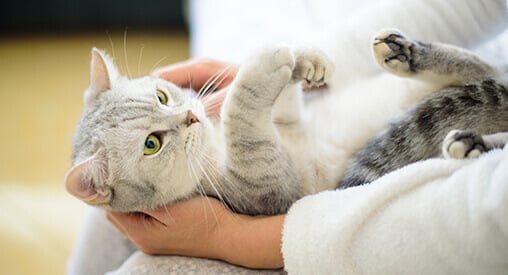Skin allergies in cats: symptoms, causes and treatments

Quick Links
What are skin allergies?
Skin allergies affect cats when they’re exposed to something in their environment that triggers an excessive immune response. These allergens could be in the air, like pollen; in your cat’s food; or result fromparasites like fleas or mites. Your cat’s body releases histamines in response to allergens. Histamines then cause irritation and inflammation that leads to an allergic reaction.
While allergies can affect any cat, they’re thought to be more common in certain breeds, such as the Devon Rex and Abyssinian.
What causes skin allergies in cats?
Skin allergies in cats are usually caused by normal proteins found in animal, plant or insect matter, which cause a disproportionate immune response in certain individuals.
They can be broadly split into the categories outlined below:
Flea-related allergies
Environmental allergens
Food allergens
Symptoms of skin allergies in cats
Cats with skin allergies may show some or all of these symptoms:
- Itchy, inflamed skin
- Skin rashes, or red or raw patches of skin
- Fur loss (alopecia)
- Overgrooming, leading to a ‘bald belly’
- Frequent skin or ear infections
If you’re concerned your cat is suffering from a skin allergy or other health condition, it’s important to consult your vet to investigate the problem. Feline allergies can be very uncomfortable for our pets and if left untreated, may cause serious infections.
Treatments for cat skin allergies:
Your vet will need as much information as possible before they can make an accurate diagnosis. They may take blood and skin samples for further analysis. Your cat may also be referred to a dermatologist for tests.
Your vet will recommend a treatment plan designed specifically for your cat, which might include some of these options:
Flea allergies
Environmental allergies
Food allergies
If food allergies are suspected, your vet may recommend a hydrolysed (thus low-allergen) diet, or a limited-ingredient diet, for your cat. Hydrolysed diets use proteins that have been broken down into smaller pieces, so your cat’s immune system should no longer recognise them as an allergen. Limited-ingredient diets exclude all ingredients your cat has eaten before. Once symptoms stop, other foodstuffs can slowly be reintroduced, with the hope of identifying the allergen by a process of elimination.
Once diagnosed, treating your cat’s skin allergy will usually help resolve any symptoms. To keep your pet happy and healthy, you may need to continue treatment throughout their life. This can become expensive – but the good news is that if your cat was insured with Petplan before being diagnosed, some or all of your costs may be covered.
Petplan is a trading name of Pet Plan Limited (Registered in England No. 1282939) and Allianz Insurance plc (Registered in England No. 84638), Registered office: 57 Ladymead, Guildford, Surrey GU1 1DB.
Pet Plan Limited is authorised and regulated by the Financial Conduct Authority. Financial Services Register No. 311969. Allianz Insurance plc is authorised by the Prudential Regulation Authority and regulated by the Financial Conduct Authority and the Prudential Regulation Authority. Financial Services Register No. 121849. Pet Plan Limited is a subsidiary of Allianz Insurance plc.



